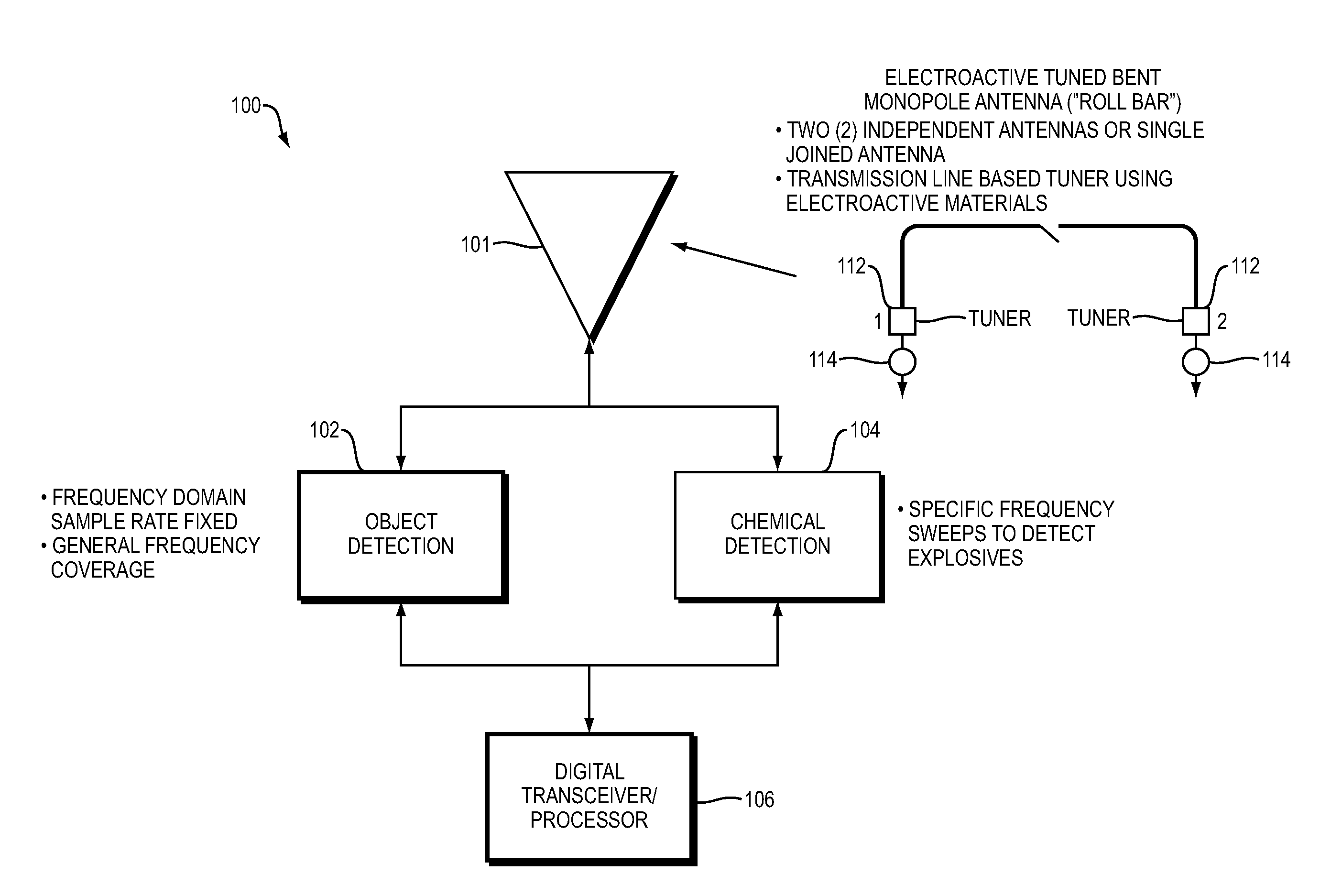Near field subwavelength focusing synthetic aperture radar with chemical detection mode
- Summary
- Abstract
- Description
- Claims
- Application Information
AI Technical Summary
Benefits of technology
Problems solved by technology
Method used
Image
Examples
Embodiment Construction
[0022]FIG. 1 is a high level notional diagram of a system 100 architecture for buried object and chemical composition detection. The system 100 consists of electromagnetic radiator 101, an object detection portion 102, a chemical detection portion 104, and a digital transceiver / processor portion 106. The system 100 detects buried objects or voids in the ground from a moving platform using a wideband, frequency scanning, near field focusing, synthetic aperture, continuous wave radar. Once an object is detected its chemical composition is determined by utilizing one or more of the same portions of the electromagnetic radiator 101, such as using Nuclear Quadrupole Resonance (NQR) excitation techniques.
[0023]The radiator 101 can take the form of a bent monopole antenna 110. It can for is example take the shape of a roll bar attached to a moving vehicle. The monopole antenna can operate as either two independent antennas or as a single joined antenna. The antenna elements can be tuned us...
PUM
 Login to View More
Login to View More Abstract
Description
Claims
Application Information
 Login to View More
Login to View More - R&D
- Intellectual Property
- Life Sciences
- Materials
- Tech Scout
- Unparalleled Data Quality
- Higher Quality Content
- 60% Fewer Hallucinations
Browse by: Latest US Patents, China's latest patents, Technical Efficacy Thesaurus, Application Domain, Technology Topic, Popular Technical Reports.
© 2025 PatSnap. All rights reserved.Legal|Privacy policy|Modern Slavery Act Transparency Statement|Sitemap|About US| Contact US: help@patsnap.com



